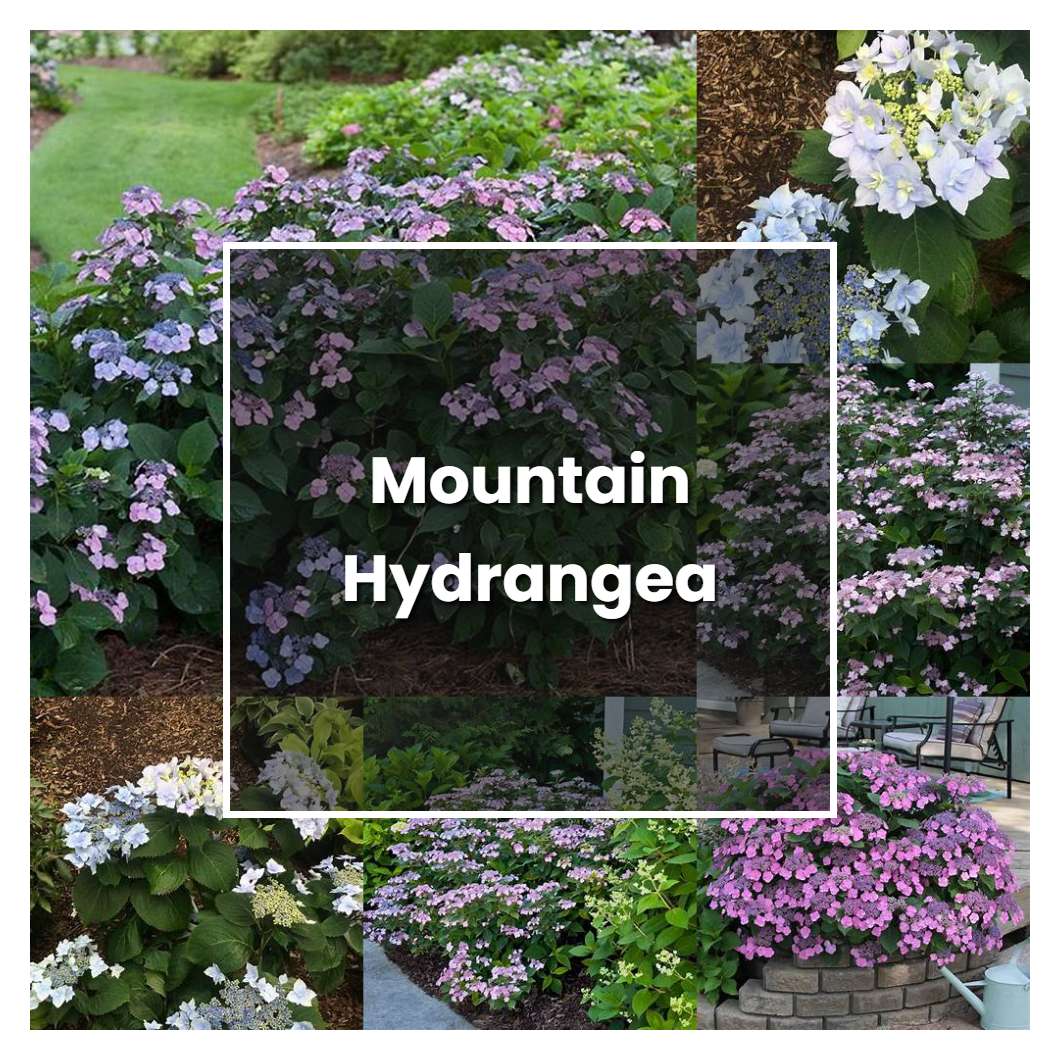Mountain hydrangea is a lovely plant that is native to Japan. It has large, beautiful blooms that range in color from white to pink. The mountain hydrangea is a slow-growing plant, but it is well worth the wait for its stunning flowers.

Related plant:
Mountain Laurel Bush
Related plant:
Mountain Snow Pieris
About soil condition, mountain hydrangea prefer acidic soil with a pH between 5.0 and 6.5. They also like their soil to be moist but well-drained. If the soil is too alkaline, the plants will not thrive.
Similar to other hydrangea species, mountain hydrangeas (Hydrangea serrata) require full sun to partial sun to bloom properly. In shady areas, the plants produce fewer blooms. If you live in an area with very hot summers, some afternoon shade will protect the plant from the intense sun and heat.
The temperature condition that is best for mountain hydrangeas is cool but not cold. They like bright, indirect sunlight and a slightly acidic soil. If the temperature gets too cold, the leaves will turn brown and fall off.
Ideal humidity condition for this plant is 50-60%. If the humidity is too low, the leaves will wrinkle and the plant will become dormant. If the humidity is too high, the leaves will yellow and the plant will wilt.
For the fertilizer, this plant does best with a light hand. Too much fertilizer can result in too much leaf growth and not enough flowers. Use a general purpose fertilizer or compost when you first plant mountain hydrangea, and then once a year thereafter. For organic options, consider using bone meal or fish emulsion. This plant also does best with well-drained, evenly moist soil. Water regularly, especially during hot, dry periods. If the soil is too dry, the flowers will wilt. If the soil is too wet, the roots will rot. To help with drainage, consider adding organic matter to the soil, such as compost.
Pruning mountain hydrangeas is an important part of keeping these shrubs healthy and attractive. These shrubs are known for their large, showy flowers, which bloom in late summer and early fall. Pruning should be done in late winter or early spring, before new growth begins. Mountain hydrangeas are generally low-maintenance shrubs, but pruning is necessary to keep them looking their best. Pruning also helps to control the size of these shrubs. When pruning, remove any dead or damaged stems, as well as any stems that are crossing or rubbing against each other. Also, cut back any straggly or leggy growth. Pruning mountain hydrangeas is not difficult, but it is important to do it correctly in order to maintain the health and appearance of these shrubs. With a little care, you can enjoy their beautiful flowers for many years to come.
Propagation is typically done through rooted cuttings taken from the parent plant. Cuttings should be taken from new growth, as opposed to older and woodier stems. The cuttings should be about 4-6 inches long, and they should be placed in a propagating tray or pot filled with a moistened, soilless propagation mix. Keep the cuttings moist, but not wet, and in a location with bright, indirect light. After a few weeks, the cuttings should develop roots, at which point they can be transplanted into pots filled with potting soil.
Usually, the plant growth rate is moderate to slow. However, with proper care, they can grow quite rapidly. They prefer moist, well-drained soils and will do best in full sun to partial shade. Mountain hydrangeas are quite tolerant of drought and can even tolerate some flooding.
Common problems for this kind of plant are: powdery mildew, leaf spots, and root rot. Powdery mildew is a white powdery fungus that appears on the leaves and stems of the plant. Leaf spots are brown or black spots that appear on the leaves. Root rot is a condition where the roots of the plant rot and the plant dies.
Source:
HYDRANGEA - HYDRANGEA SPP. | The UFOR Nursery & Lab
Hydrangea: Identify and Manage Problems - UMD
Hydrangea - University of Connecticut
